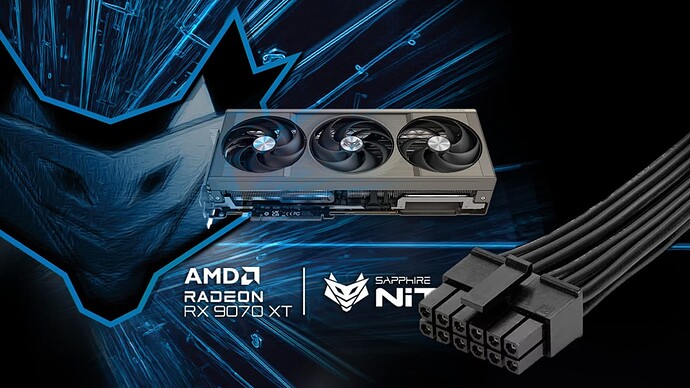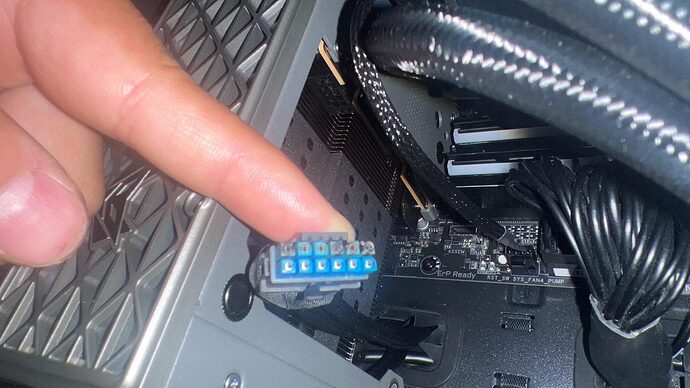Sapphire RX 9070 XT 16-Pin Connector On The Cable Gets Cooked; The Second Case For RX 9070 XT So Far
After we witnessed ASRock’s RX 9070 XT’s melting connector, another premium edition from Sapphire met the same fate.
Redditor Reports Melted 16-pin Connector on Sapphire Nitro RX 9070 XT, Which was Connected to a Corsair PSU via Adapter
It has been just over a month since we reported one of the first 16-pin connector melting cases on the Radeon RX 9070 XT, but we just saw another. This is surprising because the RX 9070 XT isn’t particularly power-hungry, and it mostly remains within the 300-350W limit at full load, depending on the parameters. Additionally, there aren’t many RX 9070 XT models, which are equipped with a 16-pin power connector, as it is not necessary. Most manufacturers have instead opted for a 3x 8-pin PCIe power connector configuration.
The only two GPU models that have adopted the 16-pin connector have finally met their imminent fate. The first was ASRock Radeon RX 9070 XT Taichi OC, and the latest case is that of the Sapphire Radeon RX 9070 XT Nitro+ edition. Redditor u/e92justin reported that his 16-pin power connector melted, which we can see in the image. It’s important to note the details provided by the user. He reportedly wasn’t using a native 12VHPWR or 12V-2x6 connector cable to power his GPU since his PSU didn’t have that connector natively.
Therefore, he used the 3x 8-pin to 12VHPWR adapter that came with the GPU. We have seen the melting problem being more common in setups that incorporate such adapters, but it’s mostly because the connector cannot handle the load balancing properly. Still, a GPU that is rated at ~300W shouldn’t have a problem with such a setup, even when there are some power spikes. As far as the power consumption goes, the user reported that his GPU was consuming up to 360W since he was running it with +10% power limit. Still, that isn’t a big deal, considering we have RTX 5080 running at the same TDP.
However, you might be aware that the RTX 5080 isn’t completely immune to connector melting, but it’s mostly common on the GeForce RTX 5090 due to the 575-600W TDP. The 16-pin connector fails to provide good load balancing, and even with proper measures, we have seen plenty of cases of melted cases. So, we cannot completely blame the RX 9070 XT connector melting on the user just because he wasn’t using the native cable.
Nonetheless, it’s advisable to go for RX 9070 XT models that ship with 3x 8-pin connectors instead of 16-pin connectors to be on the safe side. But if you have either of the ASRock or Sapphire’s models, you should adhere strictly to the manufacturer’s guidelines to rule out all the possibilities that could lead to connector melting.
Source: Sapphire RX 9070 XT 16-Pin Connector On The Cable Gets Cooked; The Second Case For RX 9070 XT So Far

